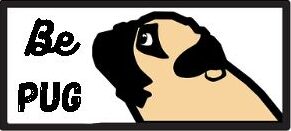Why Pugs Tilt Their Head: The Adorable Quirk Explained

Disclosure: This post contains affiliate links. As an Amazon Associate, I earn from qualifying purchases—at no extra cost to you.
Pugs are masters of melting hearts, and nothing showcases their charm more than that classic head tilt. Whether you’re talking to them, holding up a treat, or simply calling their name, their wide-eyed stare paired with a curious tilt is a sight pug lovers know all too well. But is this behavior purely for show, or does it serve a purpose?
Understanding the Famous Pug Head Tilt
The head tilt isn’t exclusive to pugs, but they’re certainly known for it. This behavior is a combination of instinct, anatomical factors, and even learned habits. For many pug owners, it feels like their dog is truly trying to understand what’s being said — and they’re not far off.
Improved Hearing and Sound Localization
Dogs rely heavily on sound to navigate their world, and the tilt may help pugs locate the origin of a noise more precisely. Tilting their heads can adjust the positioning of their ears, especially useful for breeds with flatter faces like pugs. This helps them interpret where sounds are coming from or what they might mean.
Facial Structure Plays a Role
Pugs are brachycephalic dogs, meaning they have short, broad skulls and flat faces. This unique head shape can affect their field of vision. When a pug tilts its head, it might be trying to get a clearer view of your facial expressions. For pugs, seeing your entire face may require a bit of adjustment — hence the adorable tilt.
Human Interaction Reinforcement
Pugs are highly attuned to human reactions. When they tilt their heads and you laugh, smile, or offer praise, they learn that this action earns them attention. Over time, the tilt becomes a reinforced behavior — they know it’s a surefire way to connect with you or get that treat a little faster.
Curiosity and Engagement
Pugs are naturally curious and expressive. The head tilt often signals that they’re paying close attention. It’s their way of saying, “I’m listening!” Whether it’s a new word, tone of voice, or unfamiliar noise, tilting helps them process it with greater focus.
When to Be Concerned
While head tilting is typically normal and even endearing, excessive or unbalanced tilting can be a sign of a medical issue. If your pug suddenly starts persistently tilting its head to one side, accompanied by stumbling, disorientation, or ear scratching, it’s worth checking with your vet. Inner ear infections, vestibular disease, or neurological problems can present with similar symptoms.
Conclusion
The pug head tilt is more than a cute trick — it’s a fascinating combination of instinct, anatomy, and communication. This simple gesture allows your pug to hear better, see you more clearly, and bond on a deeper level. So the next time your pug looks at you sideways, take it as a sign: they’re paying attention, and they care.






